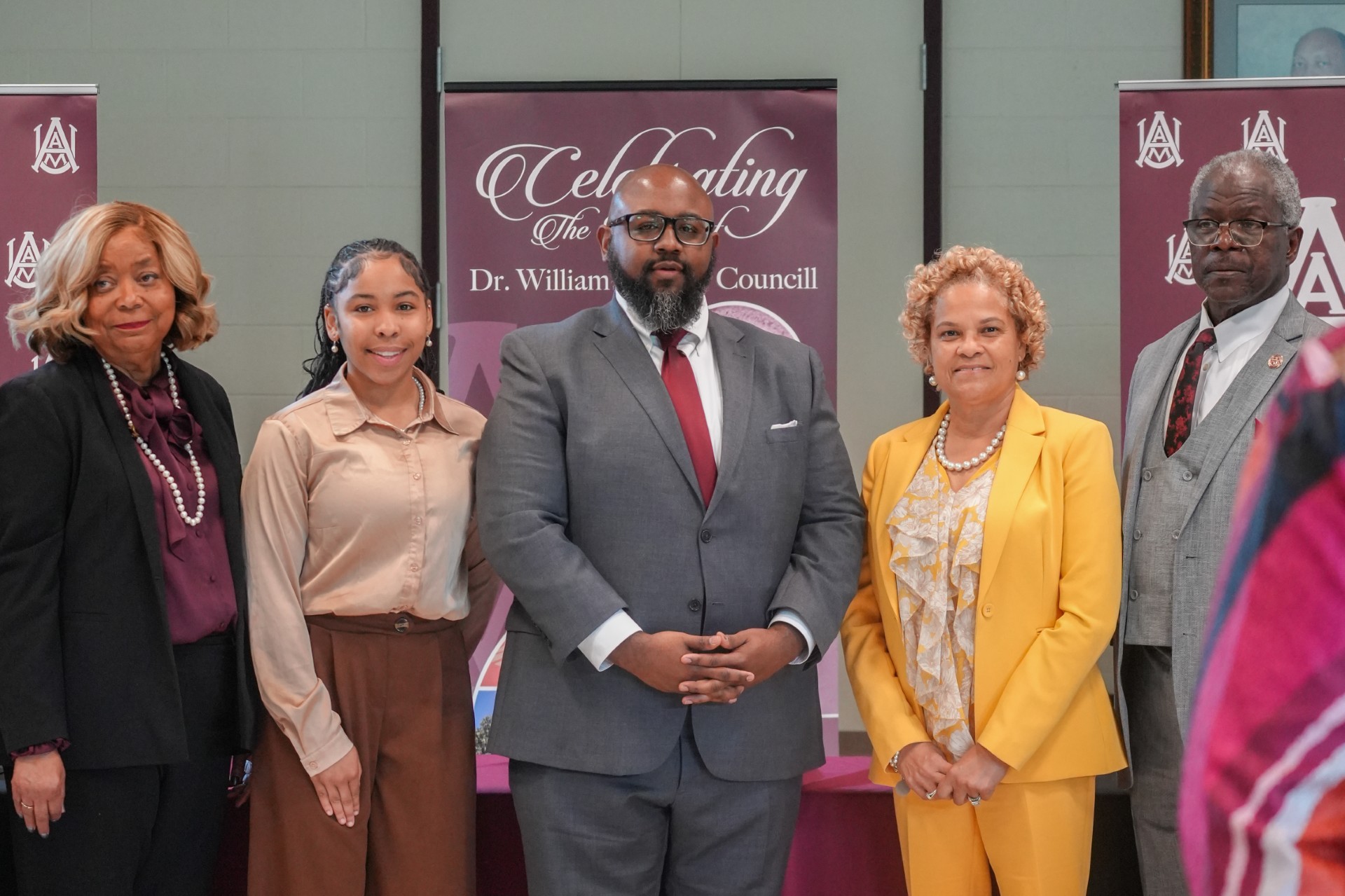Alumni and Student Leaders Explore AAMU’s Rich Heritage, Bold Future

Alabama A&M Reflects on Legacy and Future During 150th Anniversary Panel
As Alabama A&M University celebrates its sesquicentennial milestone during Founder’s Week, the institution hosted a powerful forum entitled “Coffee & Conversation on The Hill,” drawing together a distinguished panel of alumni and student leaders. Moderated by the University’s 12th President, Dr. Daniel K. Wims, the dialogue offered a multigenerational reflection on AAMU’s enduring legacy, its current trajectory, and the promising future ahead.
Former University Trustee and Chairman of the 150th Anniversary Committee, Robert Holmes, along with Alabama A&M University National Alumni Association President, Michael Miller, offered a warm welcome to the panelists and attendees, setting the tone for an afternoon of meaningful reflection and spirited dialogue.
During the discussion, President Wims underscored the importance of preserving and sharing Alabama A&M University’s full historical narrative – particularly the stories that too often go unrecognized. “Much of our rich history is not widely known or discussed,” he noted. “For example, Vivian Malone Jones, a pivotal figure in American civil rights history, is often remembered as the first African American to graduate from the University of Alabama in 1965. But few know that she earned her bachelor's degree from Alabama A&M University in 1962. That is a powerful testament to the foundation this institution provides.”
The event featured notable alumni including Judge Lynn Sherrod, a pioneering figure in Alabama’s judicial system; Dr. Oscar Montgomery, a longtime pastor and former University vice president; Dr. Dorothy Huston, former vice president for research and development; Michelle Watkins, Huntsville’s first Black woman city councilmember; Damien Green, a civic leader and former local alumni association president; and Mya Gibbs, senior computer science major and 75th SGA Executive President. Each brought a unique perspective rooted in lived experience and shared devotion to the University's mission.
The first segment of the panel, titled “Rich History,” explored how Alabama A&M has transformed lives and communities through access, opportunity, and excellence. Sherrod recounted a moment with a student whose first experiences with independence, such as sleeping in a bed alone or using a fork, occurred at AAMU. “He went on to run his own business and become very successful. That is the legacy of Alabama A&M University,” she affirmed.
Montgomery reflected on his own journey from AAMU to Purdue University, where he completed his doctorate despite initial doubts from faculty. “I was a country boy. Professors told me I wasn’t mentally equipped for their curriculum. I graduated in record time but I would not have made it without what I learned at Alabama A&M,” he said.
Huston addressed the evolving political landscape with a balanced view, emphasizing the enduring value of diversity. “Before the shift in national conversations around DEI, I trained many leaders across the Department of Defense in diversity,” she said. “If we remove race and religion from the definition and focus on difference as a human constant, we gain understanding, not division.” She also noted areas for institutional growth, including the need for more student-centered spaces. “We have a tremendous land mass, yet there are investments needed to fully leverage that for our students.”
The discussion transitioned to community engagement and partnerships, where panelists acknowledged Alabama A&M’s expanding influence in the region. “We are an athletic powerhouse in North Alabama, and that draws people in,” noted Watkins. Despite longstanding challenges – such as underfunding relative to peer institutions – panelists expressed admiration for the University's resilience. “I think our founder would be pleased with our progress,” Huston said. “We’ve had to fight for everything, and we will continue to do that and continue to rise.”
The second panel, “Bold Future,” centered on strategies for strengthening alumni engagement and fostering a culture of lifelong commitment to the University. President Wims posed a key question about the University’s large local alumni base: “How do we reconnect with the 10,000 alumni in Madison County who wear our paraphernalia, yet remain distant from our campus community?”
Watkins responded with a call for intentional outreach. “People want to be needed. Give them ownership, make them responsible for something meaningful, and they’ll come back. We must ask, and we must be consistent.” Gibbs said she’s noticed an improvement.
“I think the younger generation of alumni are slowly starting to become more engaged with current students of the University,” said Gibbs. “I think that's because of the advancements the University has made. We've grown a lot even from my freshman year, there's a tremendous difference.”
Green, drawing from his media background, credited the University’s investment in student life and branding and emphasized the need for sustained communication. “You can’t run a campaign one year and disappear the next. Engagement is a long game. You reach those most likely to connect first – and empower them to bring others along.”
When asked to identify the greatest challenge facing Alabama A&M, Watkins was candid. “Our threat is us. We must support and embrace each other. If we want our University to thrive, we have to work together.”
Huston concluded with an academic call to action. “Our students need to be job creators, not just job seekers. We must invest in innovation centers, develop entrepreneurial mindsets. We often have the door shut in our face. We don’t realize that we can be the ones standing at the other side – we can be the ones at the door.”
(Photo L-R) Judge Lynn Sherrod, SGA President Mya Gibbs, Damien Green, Councilwoman Michelle Watkins, Dr. Oscar Montgomery